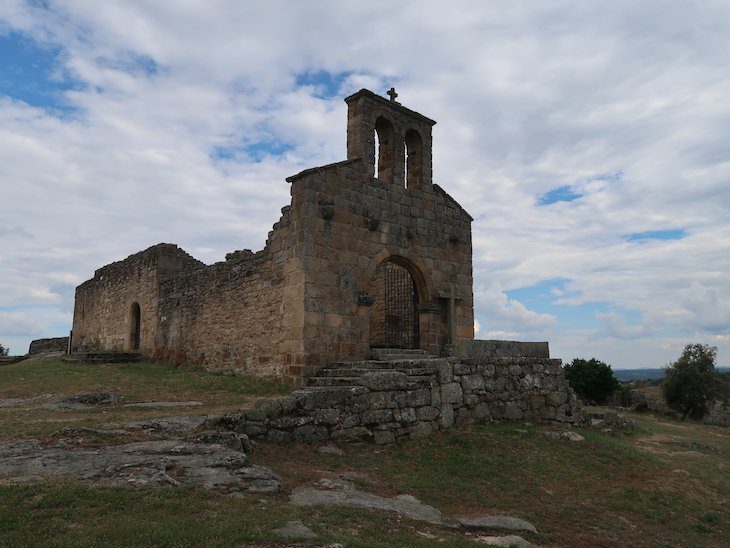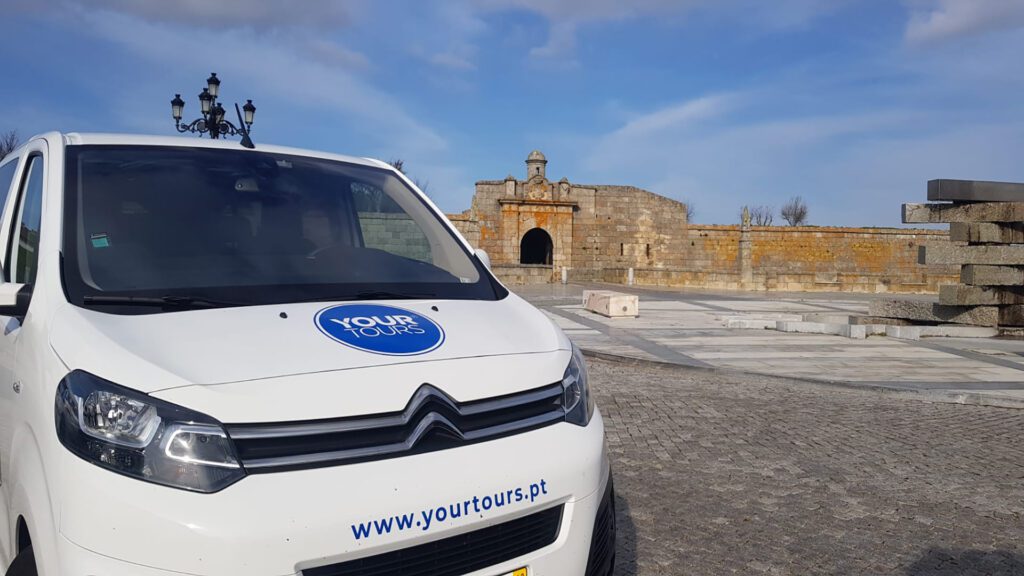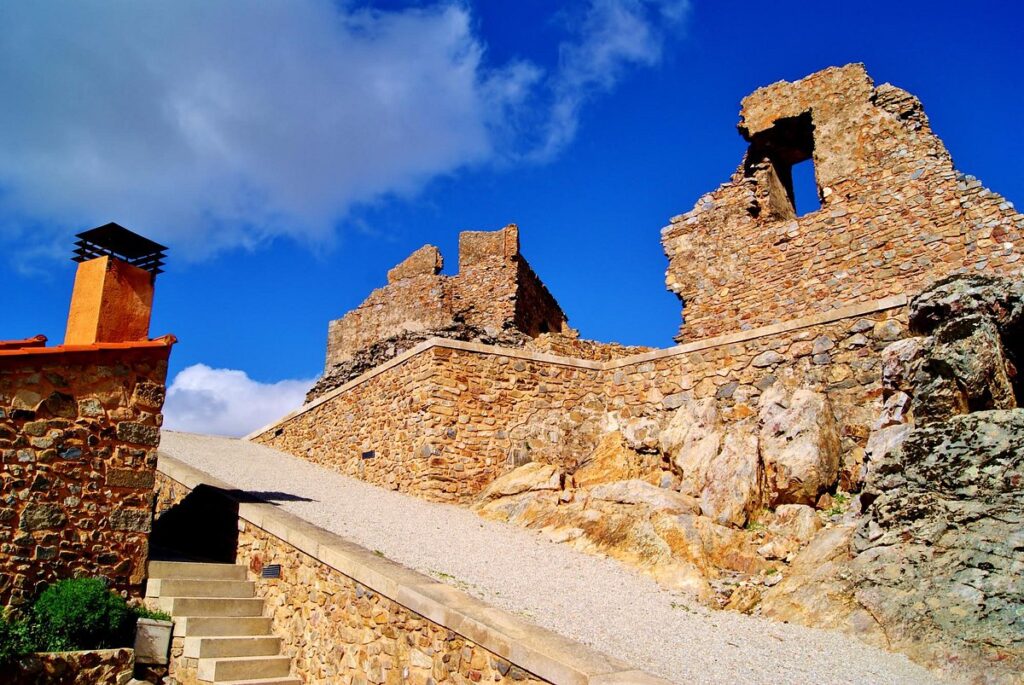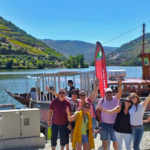A journey through history
Let yourself be transported to Medieval Portugal, the Discoveries, the Restoration, the French Invasions or even prehistory.
There are 12 Historical Villages of Portugal and they are located in the Portuguese Beira, a region full of natural values, culture and history. With proximity to Serra da Marofa, Gardunha, Serra da Estrela Natural Park and Malcata Nature Reserve, the Historical Villages reveal unique landscapes that invite you to walk, cycle or drive.
Made of granite and schist, the historic villages preserve stories of conquests, ancient traditions and dazzle with their landscapes and patrimony. Visit the historic centers and their religious heritage, popular architecture, palaces and manor houses, castles, walls and moats, pillories, prisons and town halls. Also take the opportunity to taste some of the most characteristic regional products, such as cheeses, wine, kid, lamb, sausages and olive oil.
You can also travel the Great Route of the Historical Villages of Portugal (GR22), which connects the 12 Historical Villages of Portugal in a route of about 600 km in length, and 15 routes of Small Routes (PR), from about 6 to 20 km, which take the traveler through the magical corners of the villages and surrounding natural spaces.

x
Almeida
Situated on a vast plateau above the River Côa, Almeida was one of Portugal’s most important strongholds and, seen from the air, looks like a 12-pointed star. With human occupation since the Paleolithic, it was during the Arab period that its toponym appeared, Al Mêda (the Table), Talmeyda or Almeydan, possibly alluding to its location on a plateau.
Almeida has played a very important role in the military defense of the border since the early years of Portuguese independence due to its strategic geographical position, since it is located on a plateau about 12 kms from the border line with Spain, defined by the Treaty of Alcanizes in 1297, the date on which Almeida passed into Portuguese possession. Inside the hexagonal star fortress, which has been the scene of fights and battles over the centuries, it is worth walking through the harmonious set of houses and visiting the main monuments and sites of the historic center: Portas de São Francisco, Quartel das Esquadras, Igreja da Misericórdia, Corpo da Guarda, Casa dos Governadores, Torre do Relógio, Ruínas do Castelo, Picadeiro D’El Rey, Praça Alta, Casa da Roda dos Expostos and Casamatas.

x
Belmonte
The town of Belmonte is located on the left bank of the river Zêzere, in the heart of Cova da Beira, at the foot of the Serra da Estrela. The Anta de Caria, the Castros de Caria and Chandeirinha prove that human presence in the municipality of Belmonte dates back to pre- and protohistoric times. The Roman presence is also evident in buildings such as the Centum Cellas Tower or the Villa of Quinta da Fórnea.
According to tradition, the name Belmonte comes from the place where the village stands – monte belo or beautiful hill, however, there are those who attribute to it the origin of “belli monte” – war hill. In Belmonte, it is worth mentioning the Jewish tradition that is still alive today. A royal edict issued by King Manuel I in 1496 obliged non-Christians (Jews and Muslims) to leave the country or convert to Christianity. In Belmonte there remained a group of crypto-Jews who isolated themselves in the village and secretly maintained the basic customs of Judaism until the present day.
Belmonte is a place of inestimable historical value for our country. In Belmonte, be sure to visit: The Castle; Museum of the Discoveries; Jewish Museum; Ecomuseum of Zêzere; Olive Oil Museum; the Roman Villa of Fórnea; Centum Cellas Tower; Belmonte Jewish Quarter and the Church of Santiago and Pantheon of Cabrais.
x
Castelo Mendo
Castelo Mendo is located on a hill, on the left bank of the river Côa, at an altitude of about eight hundred meters. The occupation of this landscape of great beauty goes back to the Bronze Age, with traces of a Roman settlement in the urban perimeter. The village consists of two walled nuclei, the Citadel and the Barbican, from different construction periods. The Citadel corresponds to the old borough, formed after the charter of D. Sancho II and the new borough, or Arrabalde de S. Pedro, is protected by a Dionysian wall. When the Treaty of Alcanizes definitively established the borders of the kingdom, the village lost its importance.
Strolling through the streets of Castelo Mendo, you can appreciate the ancient traces that this medieval village still retains and be sure to visit the Castle, the Ruins of the Church of Nossa Senhora do Castelo, the Tourist Office / Museum of the Senses, the churches of São Vicente and São Pedro, the Pillory, the Porta da Vila, the Manueline Houses in Rua do Forno and the “Mendo” and “Menda” in the building of the Old Domus Municipalis.

x
Castelo Novo
In the heart of Serra da Gardunha, in a natural amphitheatre landscape, the village of Castelo Novo surrounds us with the sound of water bursting from the fountains and takes us through the houses, the sidewalk and the squares in shades of grey that harmonize with the green tones of the surrounding landscape.
The village of Castelo Novo is an urban center of very remote origins, with traces of occupation in the Neo-Chalcolithic. Linked to the beginnings of nationality, it was initially referenced with its current designation in documentation from the early 13th century, when it became part of the domains of the Templar order. The organization of the village developed in the shadow of the castle, whose Gothic structure is the result of an intervention in the reign of King Dinis and its layout still presents a structure of predominantly medieval occupation. The urban agglomeration, with narrow and winding streets, includes, in addition to the castle, several buildings of great historical and heritage interest, including structures from the Manueline and Baroque periods. Some examples are the architectural complex of the Town Hall, Jail and Pillory, the fountains of D. João V and Bica and the Church of Nossa Senhora da Graça. Excellent examples of residential architecture include the houses of São Mateus, the Falcão family and the Gamboas.
In the panorama of religious architecture we highlight the Chapel of Santo António, the Chapel of Senhor da Misericórdia, the Church of Misericórdia and the Mother Church. It is also worth visiting the Castle, the Cabeço da Forca, the Pelourinho, the Lagariça, the Núcleo Museológico de Castelo Novo, installed in the old Casa da Câmara and the beautiful river beach of Castelo Novo.
x
Castelo Rodrigo
The village of Castelo Rodrigo is situated at an elevation of 820 meters, where you can glimpse the Serra da Marofa, the town of Figueira de Castelo Rodrigo and a vast landscape that reaches as far as neighboring Spain.
The village has been occupied since ancient times: it was Castro Vetão, later occupied by the Romans and there are also references to the presence of Moors. After the campaign in which the Christian troops reconquered the territory of Riba-Côa from the Muslims, the Leonese king Fernando II ordered the repopulation of this region and a few years later, Afonso IX, granted a charter. The Monastery of Santa Maria de Aguiar, of Cistercian foundation of the century. XII, is an important testimony of the concern with the reorganization and settlement of this area at the time of the Reconquest.
Castelo Rodrigo is a monumental space that maintains the characteristic medieval layout. Be sure to visit the monuments that add value to the historical heritage, among which are the old walls, the ruins of the Palace of Cristóvão de Moura, the Pillory, the Mother Church, the Monastery of Santa Maria de Aguiar, the Cistern and the traces that attest to the presence of an important community of New Christians. Walk through the Serra da Marofa and the stories of the Via Sacra, a set of small chapels evocative of the Mysteries of the Rosary, until you reach the Cristo Rei da Marofa, this point being a magnificent viewpoint over the region.

x
Idanha-a-Velha
The small village of Idanha-a-Velha, situated on the banks of the river Ponsul, stands out for its beauty and antiquity. The succession of occupations of different peoples bequeathed to Idanha-a-Velha a valuable historical heritage, making this village an outstanding place in the context of the archaeological stations of the country, for the remarkable set of ruins it preserves.
Idanha-a-Velha preserves vestiges from various periods that show a great permanence of civilization. Stroll through the streets of this beautiful village and take the opportunity to visit the North Gate and the associated wall, the Pillory, the Mother Church (former Misericórdia), the Church of Santa Maria (Cathedral), the Community Oven, the Lagar de Varas, the Epigraphic Archive and the Templar Tower, built on the podium of the main temple of the public square of the Roman city, the Forum.
Take the opportunity to visit the Chapels of São Sebastião, Espírito Santo and São Dâmaso, the latter is located in a yard overlooking the river and just a few meters away, you can admire the Ponte Velha, a bridge of Roman origin over the Ponsul.
This magnificent route connects the 12 Historical Villages of Portugal in more than 600 km of extension, in a circular route, which involves some of the most beautiful natural parks and reserves of Portugal, classified as UNESCO World Heritage: the Douro International Natural Park and Archaeological Park of the Côa Valley, the Tagus International Natural Park, and the Serra da Estrela Natural Park, whose candidacy for World Geopark was recently approved by UNESCO.
In addition to these UNESCO territories, the GR22 also includes other parks and nature reserves, such as the Serra do Açor Protected Landscape, Serra da Malcata Nature Reserve, Faia Brava Private Protected Area and Serra da Gardunha Protected Landscape. See the second part of this article to discover the other 6 Villages!



